Day 4 of a four day Autumn Tour in Norfolk, our last day. The weather was much better than yesterday – the showers much less frequent and even some nice bright intervals and patches of blue sky. There was a rather fresh and cool NW wind though on the coast today which made it feel a little colder.
Our first destination for the morning was Kelling. There were several Chaffinches and a couple of Greenfinches around the village as we got out of the minibus, and a small group of Goldfinches feeding in the tops of the birches by the school. We could hear more Chaffinches calling in the next hedge over as we started down the lane, and several flew out of the bushes ahead of us. They had possibly arrived from the Continent overnight and roosted here.
There had been reports of a large movement of Redwings inland at dawn, and we had thought we might see some thrushes on the move here today. But they had clearly come in overnight and moved quickly through. There were none moving now on the coast, and all we could find here were several Blackbirds in the bushes down the lane. We could here Bullfinches calling and several Robins ticking in the hedges as we walked along.
We stopped at the gate north of the copse to scan the Water Meadow. A Brown Hare ran across the field beyond. A family of Mute Swans, two adults and five dusky grey cygnets, were wading through the wet mud in the middle of the meadow. We remarked how good it was looking for a Jack Snipe now, how if you could walk about in the middle you would be sure to flush one, but despite a good scan we couldn’t see anything in view from the gate. There were lots of places to hide and they are always most active at dawn and dusk too.
A Marsh Harrier was flying over the field the other side of the track, flushing lots of Red-legged Partridges from stubble. A Reed Bunting flew ahead of us along the hedge as we continued north. There were more Blackbirds and finches in the bushes as we got out into the open.
A couple of dogs came past us and ran down the track, their owner following a couple of minutes later. Lots of ducks and Curlew came up off the Water Meadow as the dogs raced round the corner. Some of them resettled, but a flock of Teal flew off west.
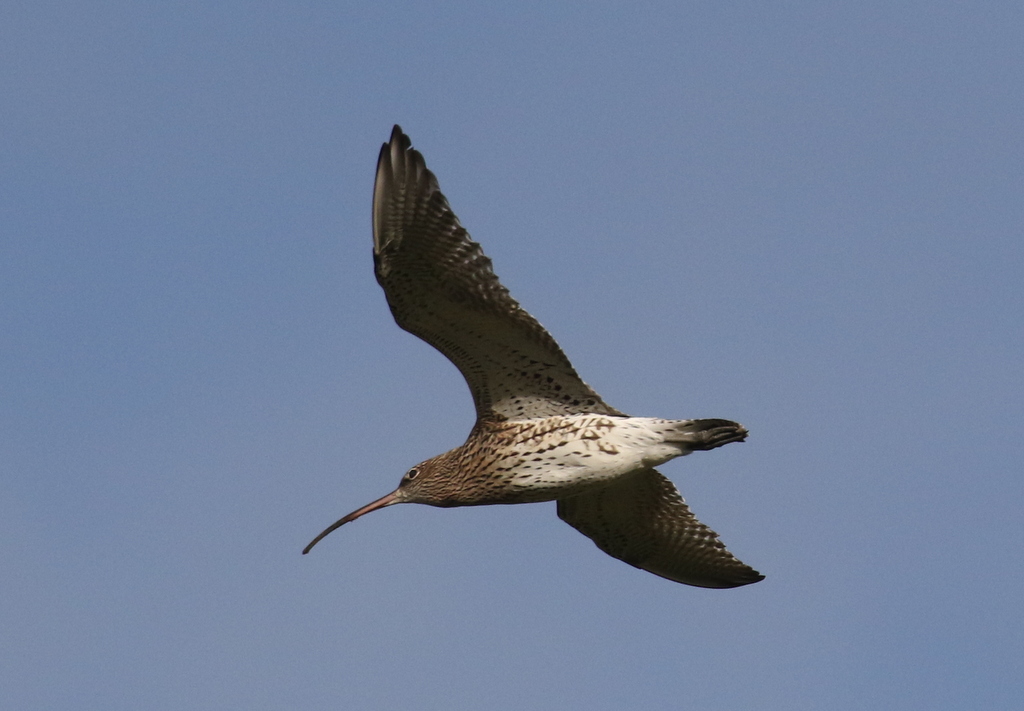
With a mixture of dark shower clouds and patches of blue sky, it was a good day for rainbows. Our first of the day was a corker – a double, with the inner one double sided too. The first of many today.
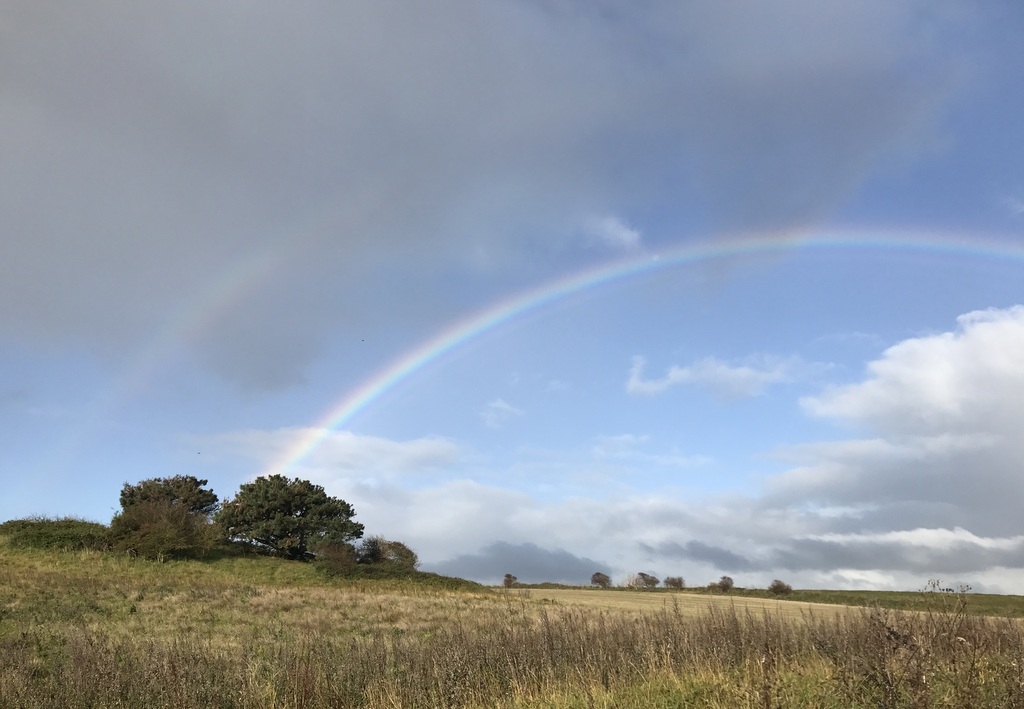
When we got to the gap in the hedge where we could see across to the water, several of the Curlew had landed again on the grass. There was a mixture of ducks on the pool, still a couple of Teal, several Shoveler, one or two Gadwall and a small group of Wigeon feeding in the grass. A single Little Grebe was diving continually out in the middle.
We stopped to scan the Quags from the crosstracks. Two Common Snipe came up from the beck and disappeared off west. A Stonechat flew in and landed in the dead umbellifers on the bank, then across into the reeds in the beck. A single Egyptian Goose and two Little Egrets were out in the middle.
As we carried on down to the corner, another Common Snipe came up from the edge of the Water Meadow. A couple more Reed Buntings chased each other in and out of the reeds, and another Stonechat was perched up in the top of the brambles in the corner, a smart male. We had a look in the grass in the corner of the Water Meadow where it had been trampled by the cattle, but there was no Jack Snipe here either.
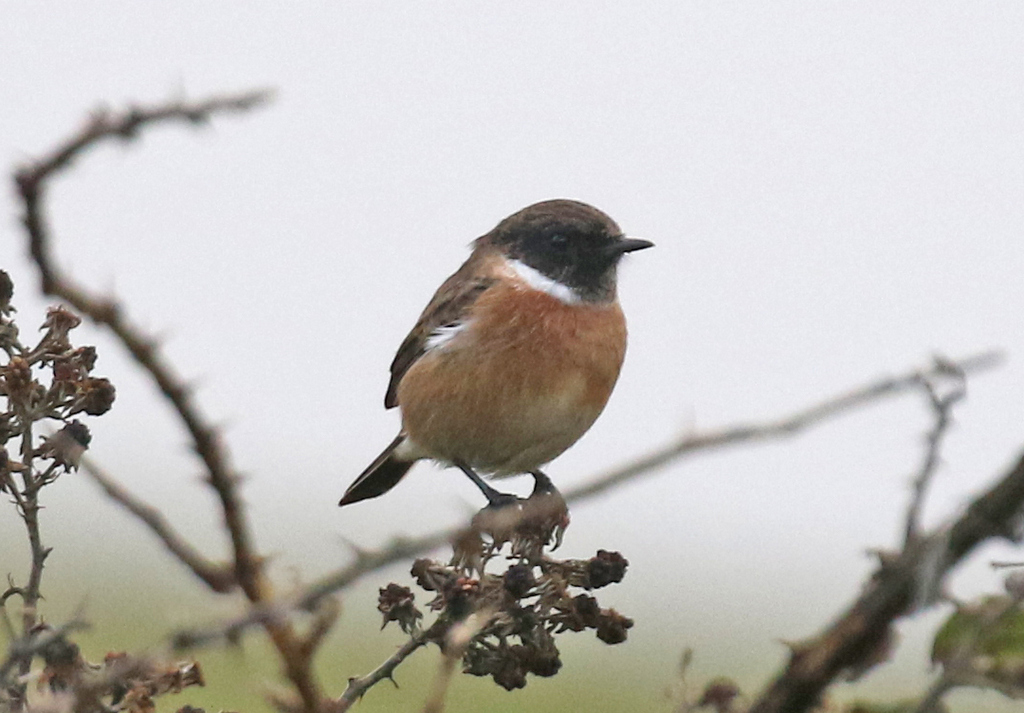
Continuing on down the track, a Linnet landed in the brambles briefly. We could already see small groups of Gannets passing just offshore, beyond the shingle ridge, so we carried on up and over to the beach to see what else we could see.
Standing on the shingle ridge, we could see small groups of auks whizzing past offshore – this continued pretty much all the time we were on the beach. There were a few auks on the sea closer in too, so we continued down to the lee of the pill box and set up the scopes. We had a nice view of a couple of Razorbills on the sea, up and down riding the waves. A Guillemot was close in too and a Red-throated Diver.
There was steady passage of Gannets past all morning too. One small group stopped and spent a few minutes shallow diving offshore. A juvenile Gannet was resting on the sea very close in, just beyond the breakers. We had a great look at it as it drifted past us with the tide. After a while, it took off and flew further out.
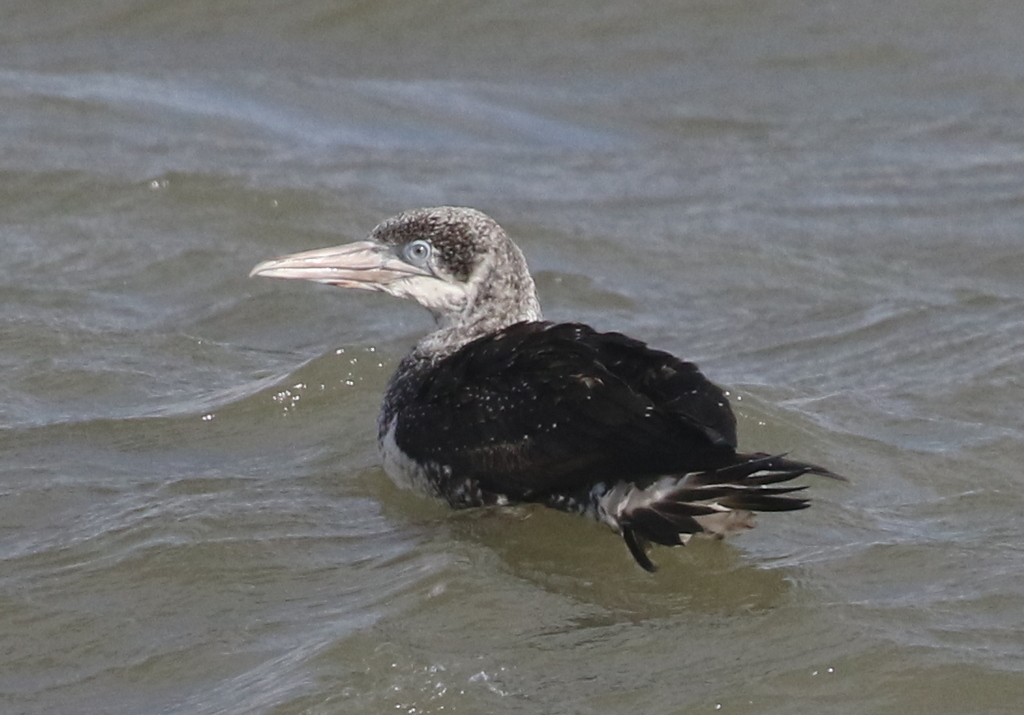
The wind was not really strong enough to get other seabirds close inshore, but we did pick up three or four Great Skuas passing by. The first was very distant, but later we had one closer in, chasing a Great Black-backed Gull, trying to get it to regurgitate it’s last meal. We could see the Great Skua’s white wing flashes. A single Arctic Skua flew past very distantly too, and what was presumably the same bird paused briefly to chase a distant tern.
There was a trickle of wildfowl moving west this morning – always interesting to see migration in action at this time of year. Two groups of three Brent Geese, and several small flocks of Wigeon and Teal flew past, birds arriving here for the winter from Russia and across Northern Europe. We picked up a distant flock of Common Scoter too, but then we had two lone birds much closer flying west which were much easier to see, the first a pale cheeked female or juvenile, then a black male.
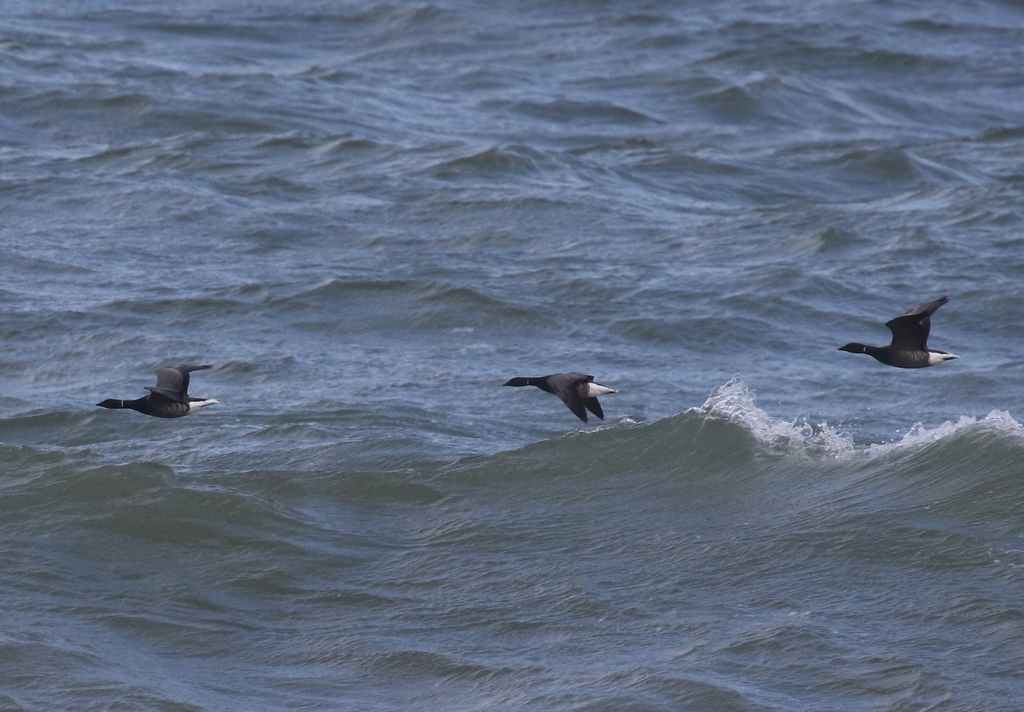
There were not many waders moving today, but there was quality rather than quantity. The first wader we spotted, a small dark bird flying west just behind the breakers, was a Purple Sandpiper. Not a common sight passing by here, although we do get small numbers which spend the winter along the coast. Otherwise, we singles of Knot, Curlew and Oystercatcher.
There were a few passerines moving too. Several Rock Pipits flew west along the beach just in front of us. A Skylark came in over the beach calling too.
We could have spent all day here, watching the birds moving, arriving. It is slightly addictive, you never know what will come past next. But we could see lots of gulls off Weybourne beach, so with a shower approaching in over the sea we decided to head back and drive round there for a closer look. A Brown Hare was sheltering from the north wind behind the brambles on the hillside above the track, looking towards the sun and enjoying a bit of warmth as it poked out between the clouds.
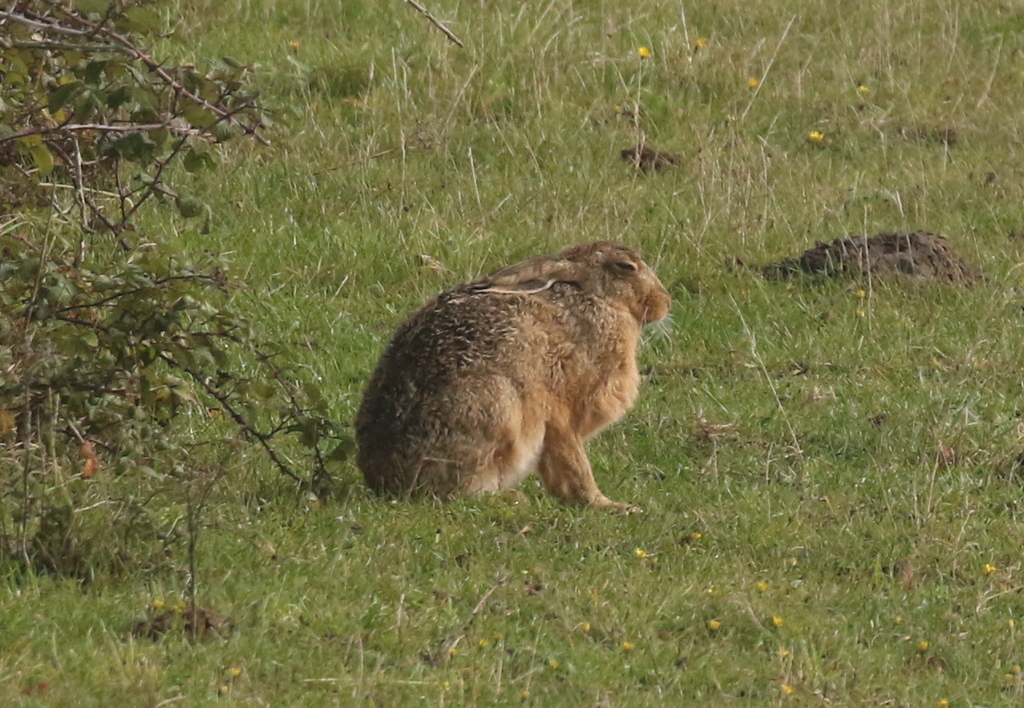
As we walk back up the lane, we stopped again at the gate. There were a couple of people here now with scopes and they thought they might have seen a Jack Snipe. They were not sure though, and it could have been a Common Snipe. We stopped to scan, but they showed us where it had disappeared into a very thick area of rushes. A Brambling called overhead as we waited but despite giving it a few minutes, the Jack snipe didn’t reappear, so we decided to move on.
Round at Weybourne, there was only a small group of gulls on the beach to the west, beyond the fishermen – Herring, Great Black-backed and Black-headed Gulls, we couldn’t see anything of more interest. There was a black bird on the beach further west, preening. It was hard to see clearly through the spray coming off the sea, but it looked like a Shag through the scope. We walked over the shingle and up onto the low cliffs beyond for a closer look., but by the time we got there the Shag had gone, presumably flown back out to sea. A small group of Turnstones were busy feeding on the top of the cliff, flicking over the small stones.
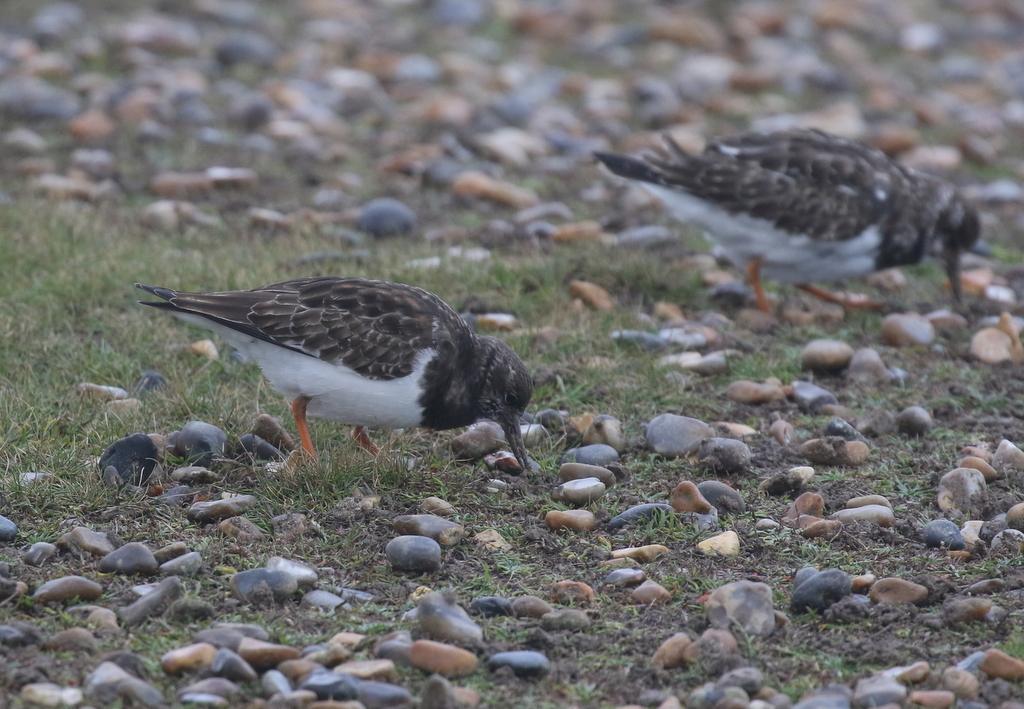
Looking to the east, we could see many more gulls scattered all along the base of the cliffs towards Sheringham. Again it was hard to see far, with the combination of the misty spray off the waves and the shade from the cliffs. We scanned through the closer ones, but couldn’t see anything unusual.
We needed to use the facilities, so we drove back to Cley now. It was time for lunch too, and we wouldn’t say no to a welcome hot drink from the cafe. Thankfully it was dry now so we could sit outside on the picnic tables to eat. From up by the Visitor Centre, we scanned Pat’s Pool. There were lots of ducks, particularly Gadwall, and several Shelduck. Two lingering Avocets were feeding in the shallower water. A Marsh Harrier flew past over the reeds beyond.
A message came through that there was indeed a Jack Snipe at Kelling, from the gate where we had looked earlier, though it was hard to see. So after lunch, we went back for another look. The Bullfinches were still calling in the lane as we walked along, and this time flew across in front of us, the male flashing pink underneath in the sunshine. A Chiffchaff was in a hawthorn overhanging the lane now too.
There was no sign of the Jack Snipe from the gate when we arrived. They can be very elusive at the best of times, so we scanned carefully around the tussocks and wet mud. A Common Snipe came up out of rushes and flew off, and a little later what may have been the same or another dropped back in to the same area. Several Curlew flew in too. A Grey Heron was walking about between a couple of cows further back. Three Pied Wagtails were flitting around in the mud.
It was starting to look like we might be out of luck again. Then the two cows started to come a bit closer, and they had still not made it to the wet mud when they flushed a small bird from the thick grass at the back – a Jack Snipe. It towered straight up, and broke the skyline above the hillside beyond. As well as its small size, we could see its shorter bill compared to Common Snipe. It turned and dropped straight down again, down into the thickest rushes and brambles at the back.
We figured the Jack Snipe might not come out from there for a while, so we set off back. We were told that a Purple Sandpiper had been on a small pool back along the coast at Salthouse, maybe the one we saw past Kelling earlier. It can be very disturbed here, but we thought it worth a look as we were passing.
When we got to Beach Road, we had a quick look through the gulls in the field opposite, but there was nothing different with them here either. We could see lots of people walking out along the shingle towards Gramborough Hill now, right past the pool, and several dogs, so we didn’t fancy our chances. We had a quick look anyway, and not surprisingly there was nothing there now.
It was exposed out by the beach and very blustery here in the wind. Another shower blew in as we walked back to the minibus, so we decided to head inland for the rest of the afternoon. We drove down to the Brecks to look for Stone Curlews.
We stopped by an empty rutted field and scanned over the hedge. There was no sign of any Stone Curlews initially, but a little further along the field we found some. A small group were very close, and flew up when they saw us peering over the hedge, but thankfully they circled round and landed straight back down again. Some others were still standing in the field, and as we scanned across we counted at least eleven here, although some were hard to see in the ruts.
We had a great view of a couple of the Stone Curlew now through the scopes, their bright yellow legs, irises and bill bases catching the afternoon sun. Well worth the journey down to see them.
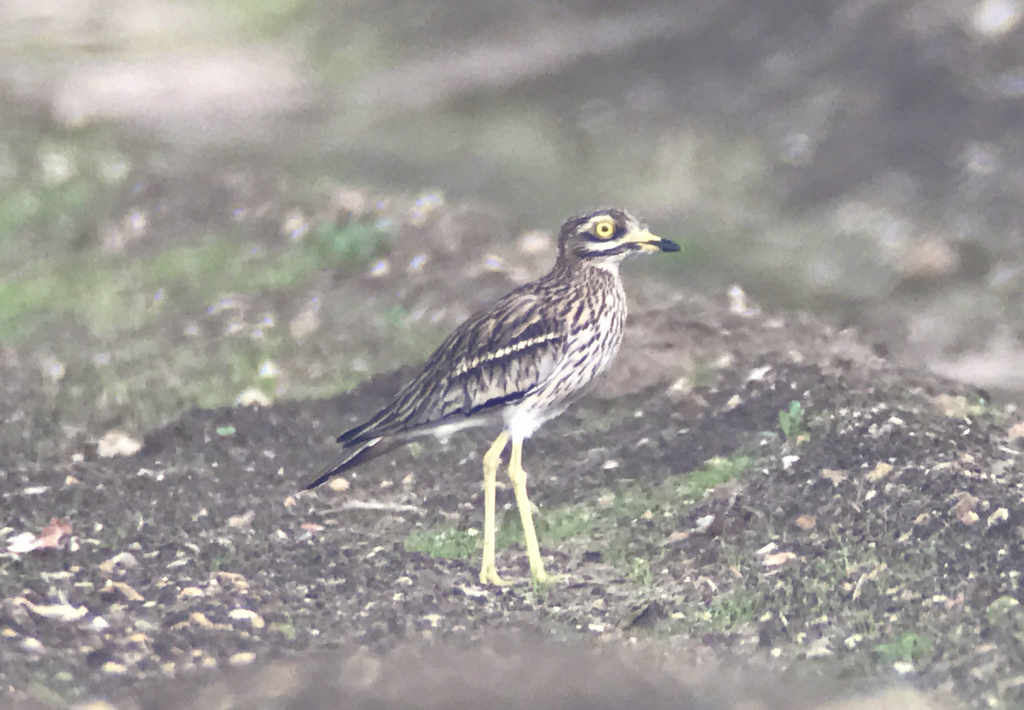
The Stone Curlews gather together in large groups at the end of the breeding season. Numbers are dropping now, as they head off to Iberia or North Africa for the winter, but we knew there had been more than this here in the last few days.
We drove further down the road and stopped in a gateway to scan across to a distant bare stoney field. There were more Stone Curlews, further away than the ones we had just seen, but we counted at least twelve. There were lots more places for them to hide here though, so there were probably quite a few more. Always a nice way to wrap up a trip this time of year, with the autumn gathering of Stone Curlews.
There were a few other birds here too. A large flock of Linnets out in the middle, kept flying up, whirling round and dropping back to feed in a weedy strip on the far side of the field in front. We had seen a big flock of sparrows here a few weeks ago too, but there was no sign of them now. Carefully scanning the nearby brambles we did find a small group of sparrows though, three Tree Sparrows with single House Sparrow. They perched up nicely on top, giving us a good view in the scopes.
There had been several Red-legged Partridges out in the closer field, and we were just about to leave when one of the group spotted a covey of seven Grey Partridges off to the right. They came out into the open and ran out across the middle of the field to the far side. A nice view and a nice late bonus.
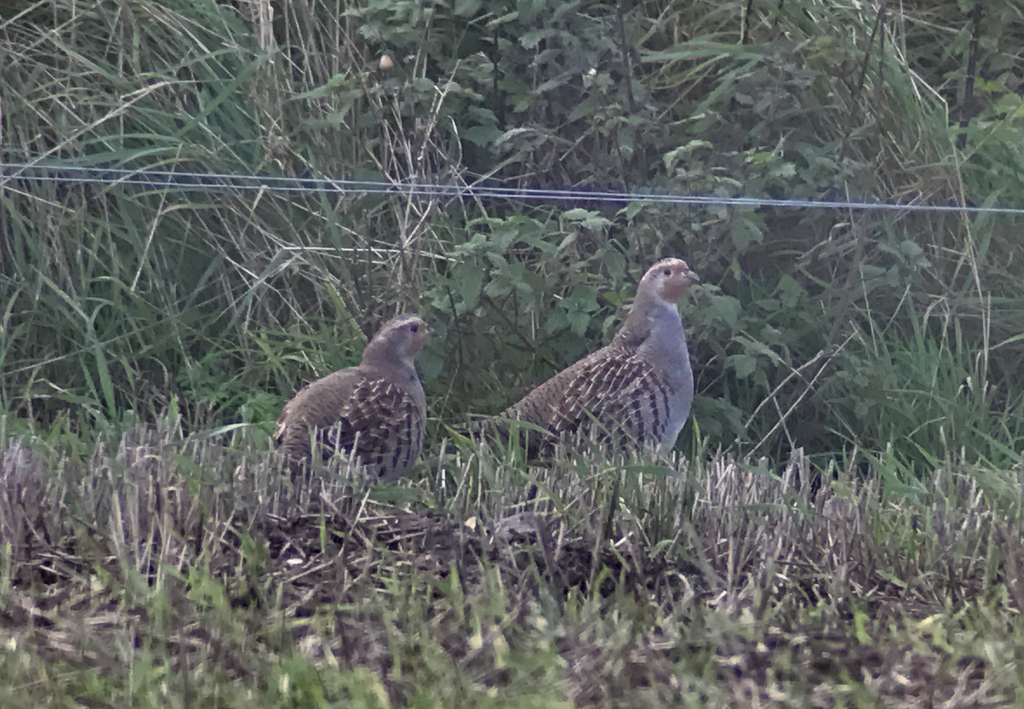
It was time to head back now. As we drove back north, we admired the last rainbows of the day as we drove towards and then into a brief heavy shower.
